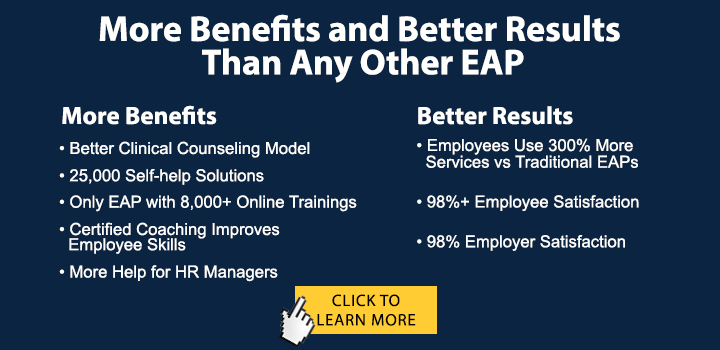In this HR News Roundup, there are several articles about remote work, from whether WFH is here to stay to leave policies for those with long-term recovery. There are also items about how COVID-19 is changing the way employees view their benefits, and what the benefit trends are. Learn about improving your employee communications to minimize misunderstanding and find a guide to the art of giving feedback – plus much more. And we close with a few items from the lighter side, just for fun.
Is Your Organization Ready for Permanent WFH?
Maxim Sytch and Lindred L. Greer, Harvard Business Review
As the pandemic accelerates the adoption of remote work, organizations large and small are realizing that jobs we used to assume had to be done on-site can in fact be done remotely. Many companies, including Twitter and Facebook, are moving to make certain roles permanently remote. While this won’t work for everyone, there are several advantages to shifting at least some of your workforce to permanent virtual positions.
Giving Candidates ‘More Than a Job’ Is More Important Than Ever
Lin Grensing-Pophal, HR Daily Advisor
The recent PwC survey Future of Recruiting found that candidates today want more than just a job. They seek an employee experience that provides them with a sense of purpose and pride in their work and the organization they work for.
While fielded before COVID-19, the survey results are still relevant, says Bhushan Sethi, Global People and Organization Co-Leader with PwC.
COVID-19 is changing how employees view their benefits
Kathryn Mayer, Human Resources Executive
The pandemic reveals gaps in employer offerings, prompts workers to wonder if their company is doing enough to help.
Related: Benefits news you may have missed: August 10-14
7 best employee benefits to provide in a recession
How to Guarantee Employees Understand You
Diana Booher, TLNT
Envision the last time you presented new information to a group of employees in an extended session of one to three hours: Rolling out new software and how they will access it to maintain their own file? Explaining a new or revised policy? Leading a training session?
As an HR leader, you probably asked your audience several times during the presentation: “Do you understand?”
And how do people generally respond? They nod, smile, say yes. Even if they don’t understand, they assume that they’ll figure it out later.
Some will. Some won’t.
Here are four ways to make sure that others really do understand what you’re communicating.
Introduce The Elephants In The Room: A Guide To The Art Of Giving Feedback
Adam Bryant, LinkedIn
Feedback may be a gift, but if that’s true, why are so many managers reluctant to give it, and why are so many people fearful of hearing it? The disconnect can be puzzling, given how much feedback we get, and even seek out, in other aspects of our lives. We grow up hearing feedback from teachers, professors, sports coaches and dance instructors. And as we pursue interests as adults, we often hire people who will teach us and give us constructive criticism to help us learn and improve. But in the workplace? Not so much.
Research: How One Bad Employee Can Corrupt a Whole Team
Stephen Dimmock and William C. Gerken, Harvard Business Review
For managers, it is important to realize that the costs of a problematic employee go beyond the direct effects of that employee’s actions — bad behaviors of one employee spill over into the behaviors of other employees through peer effects. By under-appreciating these spillover effects, a few malignant employees can infect an otherwise healthy corporate culture.
HR News Roundup Covid Updates
Leave Policies and COVID-19 “Long-Haulers” Who Don’t Recover Quickly
Eva Del Rio, SPHR – SHRM Blog
Employers will need to look at their leave policies and be aware that not every COVID-19 recovering employee will be able to return to work in two weeks or be able to perform the same job with the same skill, and will need to adjust accordingly. It’s possible that some of these cases may be severe enough that they need to be treated as a disability under ADA.
People Analytics in the Age of COVID-19
Jojo Harris, Insurance Journal
People analytics is at the crux of modern workforce management. Human resources departments operate as a strategic function, collecting workforce data and analyzing it in order to improve the performance of their business and influence their decisions and paths forward. Through data and analytics, HR teams can predict future workforce needs, identify flight risks, track career development progress, understand productivity trends and determine employee engagement levels, among many other metrics.
Update: OSHA says COVID-19 is a Recordable Illness
Employers should take note, as this revised policy is overriding the April 10 guidance memo, which only required that employers in specific industries — such as health care, emergency response, and correctional institutions — needed to make work-related determinations on COVID-19 cases.
CDC Coronavirus Symptom Checker
The purpose of the Coronavirus Self-Checker is to help you make decisions about seeking appropriate medical care. This system is not intended for the diagnosis or treatment of disease or other conditions, including COVID-19.
HR News Roundup Quick links
- 12 Little Things to Check Before Your Next Web Conference Call
- 3 tips for leading in the WFH environment
- 9 Words and Phrases You’re Probably Using Wrong
- Employers Face Increase In COVID-19 Wrongful Death Lawsuits
- Workplace Power: The 7 Types and Why You Need Them
- How to prepare for rising stress ahead
- Employers Predict Most Furloughed Workers Will Return by Q1 2021
- How do you protect your credit rating during the pandemic?
- 4 daily practices that foster emotional resilience
- Three Important Criteria for Managing Time
HR News from the Lighter side
- How have you been using your time during any Covid-19 lockdowns? The Getty Museum issued a challenge to its social media followers to re-create a favorite work of art using objects lying around home. The results are extremely imaginative and fun, as per the Gettty Blog, which talks about the challenge and shows a sample of some entries. Time sink warning – if you click on the links in the post leading to their social media accounts and those of other museums doing similar challenges, you could be there for a long time. Here are more entries from seniors, who also had fun with the challenge. it became so popular, they turned it into a book.
- Maybe during the pandemic, you’ve increased your solo walks, but if you are getting tired of walking around the block, why not try Routeshuffle? It’s a new website for generating random routes for running, walking and biking on the fly, made by a high school runner. It’s the best way to make routes in only a few clicks. Just enter your starting point, how long you want your route to be, and the sport. Try it!
- This item should have particular appeal to the doctors, nurses, EMTs and healthcare professional crowd. In 49 ways to stay out of my ER, an Emergency Room physician. who says “I’m an ER doc. I care for patients. All patients: Those who need to be in the ER; those who don’t; those who wouldn’t be there if they knew better. For them, for you and for fun, I’ve got some tips to keep you happy, safe and away from my ER. Enjoy.”
- Hey humans, you aren’t the only ones who work – some pets have jobs, too. See this excellent portfolio of Hong Kong Shop Cats. And if you enjoy seeing cats in the workplace, you might enjoy the Twitter feed of Bodega Cats.
Recent blog posts of note:


